
Worksheets and lessons on adverbs and adjectives for various reading levels.
- Subject:
- English Language Arts
- Material Type:
- Lesson Plan
- Provider:
- E Reading Worksheets
- Author:
- E Reading Worksheets
- Date Added:
- 02/26/2019

Worksheets and lessons on adverbs and adjectives for various reading levels.

In this lesson, students will learn what is needed to create a complete sentence. They will review what nouns, verbs, and adjectives are while combining words to create complete sentences. Students will also practice using capital letters at the beginning of sentences as well as punctuation at the end of sentences.

This resource contains a collection of worksheets and practice quizzes on the proper use of capitalization.

A series of grade-level worksheets on the correct use of capitalization.

This resource contains a Powerpoint on commas, colons, and semicolons, as well as worksheets on the correct use of commas.

This textbook follows California Language Arts Standards for grades 9-12 to provide a generalized understanding of composition and to serve as a supplementary aid to high school English teachers.

Worksheets and lessons on the correct use of prepositions for various reading levels.

This resource provides practice and explanation for students on how to use a semicolon as well as a conjunctive adverb for joining two independent clauses.

This resource contains a collection of worksheets on the proper use of contractions.
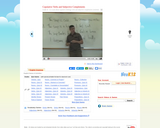
This video discusses the use of copulative (linking) verbs and subjective complements in sentences.
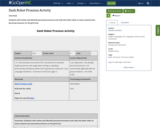
Students will review and identify personal pronouns and code the Dash robot to move toward each personal pronoun on the grid mat.

The 11th grade learning experience consists of 7 mostly month-long units aligned to the Common Core State Standards, with available course material for teachers and students easily accessible online. Over the course of the year there is a steady progression in text complexity levels, sophistication of writing tasks, speaking and listening activities, and increased opportunities for independent and collaborative work. Rubrics and student models accompany many writing assignments.Throughout the 11th grade year, in addition to the Common Read texts that the whole class reads together, students each select an Independent Reading book and engage with peers in group Book Talks. Students move from learning the class rituals and routines and genre features of argument writing in Unit 11.1 to learning about narrative and informational genres in Unit 11.2: The American Short Story. Teacher resources provide additional materials to support each unit.

People often say that mankind should learn from history. Charles Dickens, whose books are considered classics, set his novel A Tale of Two Cities in the past. He wanted his readers to learn from the bloody French Revolution and from the widespread brutality in London. Both cities (Paris and London) offer the reader a glimpse into dark and dangerous times. As students read about Dickens's Victorian setting and learn his view of the French Revolution, they will think about what makes a just world. Students will have a chance to think about their own experiences, and, using techniques they have learned from Charles Dickens, they will do some writing that sends a message about your own world.
ACCOMPLISHMENTS
To complete the unit accomplishments, students will:
Read the Charles Dickens novel A Tale of Two Cities.
Read several short pieces, including a biography of Dickens and excerpts from other literature, to help them understand Dickens’s world and the world of the novel.
Explore new vocabulary to build their ability to write and speak using academic language.
Practice close reading and participate in several role plays and dramatic readings to help them experience the dramatic writing style of Charles Dickens.
Write a vignette and a short narrative piece, and practice using descriptive detail and precise language.
Write a reflection about the meaning of Dickens’s novel.
GUIDING QUESTIONS
These questions are a guide to stimulate thinking, discussion, and writing on the themes and ideas in the unit. For complete and thoughtful answers and for meaningful discussions, students must use evidence based on careful reading of the texts.
How does good storytelling affect the reader, and how can a good story promote change in the world?
What was the Victorian view of gender roles?
How can power be abused?
What is loyalty ? What are the limits of loyalty?
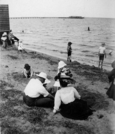
In this lesson, you will consider the relationship between character and caricature, and discuss the ways that Dickens presents his characters—whether realistically or as exaggerations—and begin to explore the reasons he might have had for presenting his characters in this way.In this lesson, students will consider the relationship between character and caricature, discuss the ways that Dickens presents his characters— whether realistically or as exaggerations—and begin to explore the reasons he might have had for presenting his characters in this way.

In this unit, students will explore great works of American literature and consider how writers reflect the time period in which they write. They will write two literary analysis papers and also work in groups to research and develop anthologies of excellent American stories.
ACCOMPLISHMENTS
Students read and analyze stories from several 19th-, 20th-, and 21st-century American authors. After researching a time period, they select stories from that period to create an anthology. The readings enhance their understanding of the short story, increase their exposure to well-known American authors, and allow them to examine the influence of social, cultural, and political context.
Students examine elements of short stories and have an opportunity for close reading of several American short stories. During these close readings, they examine the ways that short story writers attempt to explore the greater truths of the American experience through their literature.
GUIDING QUESTIONS
These questions are a guide to stimulate thinking, discussion, and writing on the themes and ideas in the unit. For complete and thoughtful answers and for meaningful discussions, students must use evidence based on careful reading of the texts.
If you were to write a short story about this decade, what issues might you focus on?
What defines a short story? Just length?
To what extent do these stories reflect the era or decade in which they were written?
To what extent are the themes they address universal?
CLASSROOM FILMS
History.com has short videos on the Vietnam War (“Vietnam” and “A Soldier's Story”).
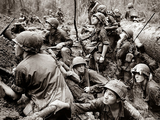
In this lesson, students will explore some elements of grammar in a paragraph from “The Things They Carried.”
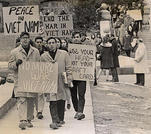
In this lesson, students will continue to read, annotate, write about, and discuss “The Things They Carried.”

This resource contains a collection of worksheets and activities on the proper use of homophones, homonyms, and homographs

Students will better understand the use of I, me, and other pronouns.

Worksheets and lessons on the correct use of interjections for various reading levels.